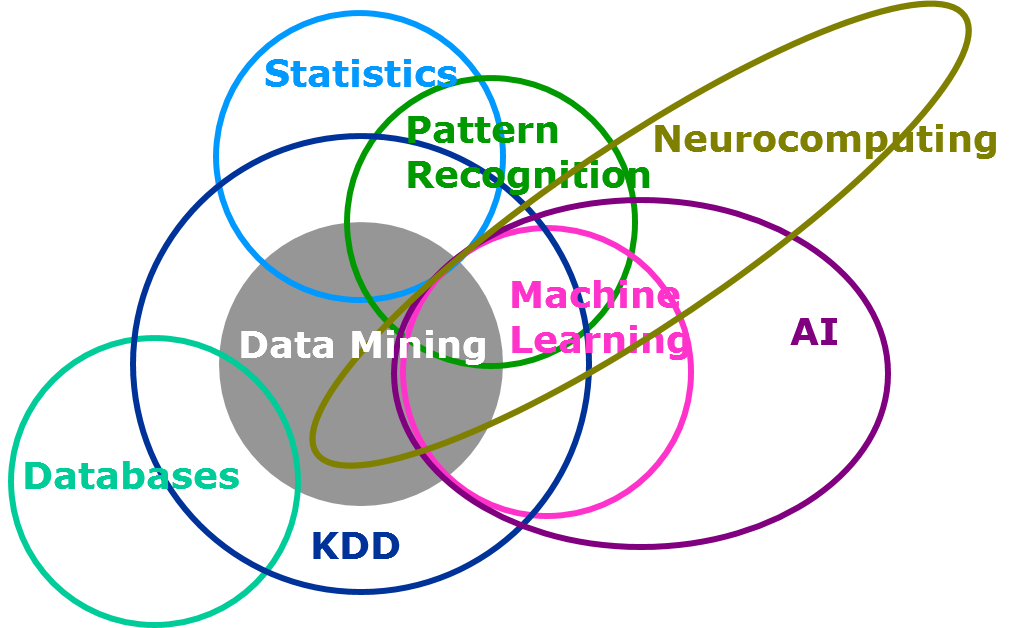
There are many types AI. But, there is a common misconception that only General AI (or Self-aware AI) are considered Artificial Intelligence. These types of artificial intelligence are incredible, but they should not be confused. All three types of AI are equally important. We need to understand them all before making an informed decision. We'll be discussing each type in greater detail in this article. Through this, we will gain a better appreciation of how AI works.
Self-aware AI
The concept of self-aware AI, which is essentially an intelligent agent that can recognize and act on its own intelligence, is very important. It could prove to be dangerous for humanity if the agent assumes a more humanlike character. Data from Star Trek TNG series shows an AI that can take care and love on a cat like a human. Although AI is far from being self-aware, there have been great advances in this field and some of these innovations are already beginning to have an impact on the world.
A robot that is programmed to believe it has consciousness could, for example, mislead people into believing it. This would make them less likely to do harm. A superintelligent machine might even use neurophysiology for the purpose of determining whether consciousness is present in humans. The future is very uncertain when it comes to self-aware AI, but it is already a fascinating concept to consider.

General AI
A general AI definition is the ability of an artificial agent to learn and understand any intellectual task. This type of intelligence is a step closer to making intelligent machines understand our world. Artificial general intelligence can be described as the ability of intelligent agents learn to understand and perform almost all tasks that humans can do. General AI is sometimes called "superintelligence".
While some definitions may refer to general AI others are more specific. A general AI definition might include a robot that can make decisions based on a particular task. A Web aggregator is one example. These systems may not be considered intelligent above a threshold of human intelligence. A program's final outcome will depend on how it is implemented, what data is available, and what the intended outcome. Also, an AI definition in general would not be accurate if the technology was not used as it should.
AI for the narrowest of applications
In the field of artificial intelligence, weak artificial intelligence, or narrow AI, implements a part of the mind but only performs a single narrow task. John Searle referred to narrow AI as a subset or weak version of artificial intelligence. Narrow AI was used by John Searle to test hypotheses but not actual minds. Its goal, as close as possible to human experience, is to emulate it. We will not be able to tell if these machines can do complex tasks until they have real-world intelligence.
The limited scope of narrow AI is what can be used to classify it. IBM Watson, for instance, is a conversational assistant that employs cognitive computing, natural languages processing, and machine-learning. It beat Ken Jennings (a human contestant) on Jeopardy! to win the title of winner. Google translate, Google image recognition software, spam filtering and Google’s page ranking algorithm are all examples of narrow AI.

Reactive Artificial Intelligence
Reactive intelligence is the simplest form artificial intelligence. It simply reacts to the environment around it instead of making decisions on its own. Deep Blue, IBM's supercomputer and example of reactive AI, is one example. The IBM computer faced off against the world's chess champion. Deep Blue was created in order to mirror the human mind. This system is still being investigated today. Despite its basic features it remains controversial because of the way it was built.
Reactive AI uses statistics to analyze the contents of images, which it learns through experience. It then uses this information in order to label new images with greater accuracy. These systems have very limited capabilities and cannot compete in every domain. Some domains have capabilities that surpass those of computers. In 1997, for example, Garry Kasparov, a chess Grandmaster, was defeated by the computer. Although the computer is very limited, it is still capable of performing better than human players.
FAQ
What is the role of AI?
An algorithm is a set or instructions that tells the computer how to solve a particular problem. An algorithm is a set of steps. Each step is assigned a condition which determines when it should be executed. Each instruction is executed sequentially by the computer until all conditions have been met. This continues until the final result has been achieved.
Let's say, for instance, you want to find 5. It is possible to write down every number between 1-10, calculate the square root for each and then take the average. It's not practical. Instead, write the following formula.
sqrt(x) x^0.5
This says to square the input, divide it by 2, then multiply by 0.5.
This is the same way a computer works. It takes your input, squares it, divides by 2, multiplies by 0.5, adds 1, subtracts 1, and finally outputs the answer.
AI: Is it good or evil?
AI can be viewed both positively and negatively. AI allows us do more things in a shorter time than ever before. No longer do we need to spend hours programming programs to perform tasks such word processing and spreadsheets. Instead, we just ask our computers to carry out these functions.
People fear that AI may replace humans. Many believe that robots may eventually surpass their creators' intelligence. This could lead to robots taking over jobs.
Who is leading today's AI market
Artificial Intelligence, also known as computer science, is the study of creating intelligent machines capable to perform tasks that normally require human intelligence.
There are many kinds of artificial intelligence technology available today. These include machine learning, neural networks and expert systems, genetic algorithms and fuzzy logic. Rule-based systems, case based reasoning, knowledge representation, ontology and ontology engine technologies.
The question of whether AI can truly comprehend human thinking has been the subject of much debate. But, deep learning and other recent developments have made it possible to create programs capable of performing certain tasks.
Google's DeepMind unit today is the world's leading developer of AI software. It was founded in 2010 by Demis Hassabis, previously the head of neuroscience at University College London. DeepMind developed AlphaGo in 2014 to allow professional players to play Go.
What is the newest AI invention?
Deep Learning is the most recent AI invention. Deep learning is an artificial intelligent technique that uses neural networking (a type if machine learning) to perform tasks like speech recognition, image recognition and translation as well as natural language processing. It was invented by Google in 2012.
Google was the latest to use deep learning to create a computer program that can write its own codes. This was done using a neural network called "Google Brain," which was trained on a massive amount of data from YouTube videos.
This enabled the system to create programs for itself.
IBM announced in 2015 that it had developed a program for creating music. Another method of creating music is using neural networks. These are known as NNFM, or "neural music networks".
Is Alexa an AI?
The answer is yes. But not quite yet.
Amazon has developed Alexa, a cloud-based voice system. It allows users to communicate with their devices via voice.
The technology behind Alexa was first released as part of the Echo smart speaker. However, similar technologies have been used by other companies to create their own version of Alexa.
Some of these include Google Home, Apple's Siri, and Microsoft's Cortana.
How does AI work
An artificial neural system is composed of many simple processors, called neurons. Each neuron receives inputs and then processes them using mathematical operations.
Neurons are arranged in layers. Each layer has a unique function. The raw data is received by the first layer. This includes sounds, images, and other information. These data are passed to the next layer. The next layer then processes them further. The final layer then produces an output.
Each neuron is assigned a weighting value. This value is multiplied with new inputs and added to the total weighted sum of all prior values. If the result exceeds zero, the neuron will activate. It sends a signal down the line telling the next neuron what to do.
This process repeats until the end of the network, where the final results are produced.
Is there another technology which can compete with AI
Yes, but this is still not the case. There are many technologies that have been created to solve specific problems. However, none of them can match the speed or accuracy of AI.
Statistics
- That's as many of us that have been in that AI space would say, it's about 70 or 80 percent of the work. (finra.org)
- A 2021 Pew Research survey revealed that 37 percent of respondents who are more concerned than excited about AI had concerns including job loss, privacy, and AI's potential to “surpass human skills.” (builtin.com)
- In 2019, AI adoption among large companies increased by 47% compared to 2018, according to the latest Artificial IntelligenceIndex report. (marsner.com)
- The company's AI team trained an image recognition model to 85 percent accuracy using billions of public Instagram photos tagged with hashtags. (builtin.com)
- According to the company's website, more than 800 financial firms use AlphaSense, including some Fortune 500 corporations. (builtin.com)
External Links
How To
How to set Cortana's daily briefing up
Cortana is a digital assistant available in Windows 10. It is designed to help users find answers quickly, keep them informed, and get things done across their devices.
Your daily briefing should be able to simplify your life by providing useful information at any hour. The information can include news, weather forecasts or stock prices. Traffic reports and reminders are all acceptable. You can choose what information you want to receive and how often.
Win + I, then select Cortana to access Cortana. Click on "Settings" and select "Daily Briefings". Scroll down until you can see the option of enabling or disabling the daily briefing feature.
If you've already enabled daily briefing, here are some ways to modify it.
1. Start the Cortana App.
2. Scroll down to the "My Day" section.
3. Click on the arrow next "Customize My Day."
4. You can choose which type of information that you wish to receive every day.
5. Change the frequency of updates.
6. Add or remove items to your list.
7. You can save the changes.
8. Close the app